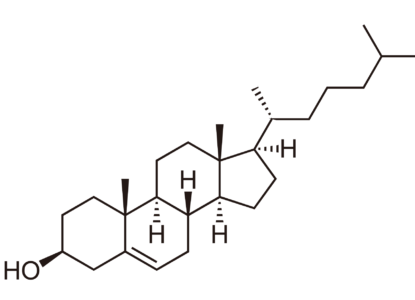Everyone is Wrong About Saturated Fat
Article at a Glance
- In part based on the work of Ancel Keys, US Dietary Guidelines on saturated fat recommend limiting intake to less than 10% of calories per day.
- Critics of the Guidelines, citing several large-scale studies, such as the PURE study, claim there is no reason to “arbitrarily” cap saturated fat intake.
- However, on a 2,000-calorie diet, just one slice of cheese daily separates the highest saturated fat group in the PURE study from the US dietary guidelines on saturated fat.
- Information emerging from more recent studies suggests that genetic variants modulate the relationship between saturated fat and cardiovascular disease-related biomarkers. No two people react exactly the same to saturated fat in the diet.
- While the US Dietary Guidelines are an overreach for many of us, the critics of Key’s work are also wrong that there is no reason to cap saturated fat intake under any circumstances.
- It’s past time for a nuanced and personalized approach to this issue.
Genes Mentioned

Contents
To understand today’s heated debates about how much-saturated fat we should or shouldn’t eat, it’s important to travel back to the 1950s and the Eisenhower Administration.
I Love Lucy was a hit TV show, Elvis Presley was on the rise, and Marilyn Monroe, Audrey Hepburn, and Marlon Brando were at the height of their fame.
At the time, heart disease was considered an inevitable result of aging, but the national conversation changed after President Eisenhower suffered a heart attack in 1955 while vacationing in Denver, CO.
His physician, Paul Dudley White, was heavily influenced by an ambitious physiologist at the University of Minnesota named Ancel Keys, who was the founder of the diet-heart hypothesis.
The diet-heart hypothesis states that saturated fat causes heart disease by raising serum cholesterol, which leads to plaque deposits in the arteries.
This was the reason Eisenhower eschewed butter in favor of margarine in the wake of his heart attack.
Eisenhower’s low-fat, low-cholesterol diet was widely publicized, though his subsequent heart problems fueled debates about its effectiveness that linger to this day.
The Seven Countries Study
In the wake of the public’s growing interest in heart-healthy eating, Keys embarked on an ambitious study to prove his hypothesis.
In the “Seven Countries Study,” Keys and his team followed thousands of men in seven countries to track the impact their diets had on cardiovascular health and mortality.
Starting in 1958 and lasting for 25 years, men in the United States, Finland, Greece, Japan, Italy, Netherlands, and the former Yugoslavia would record detailed data points about their diets and lifestyle.
The ultimate findings cemented the diet-heart hypothesis as the foundation of American public health, a position it occupies to this day.
Keys and colleagues’ data showed that men in countries, like the United States and Finland, with the greatest saturated fat intake, had greater incidence of heart disease and death.
Heart disease incidence and mortality was 10 times greater in butter-loving Finland than in Crete or rural Japan, locations where dietary saturated fat is very low at just 5-7% of daily calories.
The Seven Countries Study was an impressive piece of research that followed subjects for over 20 years, but rather than settling the saturated fat debate once and for all, its critics have only grown with time.

Get Started With Personalized Nutrition
Gene Food uses a proprietary algorithm to divide people into one of twenty diet types based on genetics. We score for cholesterol and sterol hyperabsorption, MTHFR status, histamine clearance, carbohydrate tolerance, and more. Where do you fit?
Major Criticisms of Keys
The study, though powerful in its scope, has attracted a growing number of critics over the years, who levy four big allegations:
- Cherry Picking: The Keys team had access to 22 countries but chose data from only 7 for the study
- French Paradox Exclusion: One of the countries excluded was France, where saturated fat intake is relatively high, but heart disease is lower
- Greek Lent: Data in Greece was collected during Lent when meat would have been eaten much less
- Sugar to Blame: Keys and team suppressed data that sugar may have played a larger role than saturated fat in developing heart disease
To be sure, the Seven Countries Study is not perfect.
As an epidemiological study, it cannot prove causation and the total exclusion of women leaves major holes in the data.
Further, subsequent studies, some of which were inspired by Keys, have cast doubt on the viability of the diet-heart hypothesis and given rise to an ever-growing chorus of detractors.
The Minnesota Coronary Experiment (MCE)
One such study was called the Minnesota Coronary Experiment, a rare double blind randomized controlled trial in the nutrition world.
Subjects, aged 20-97, were living at mental health recovery facilities and a hospital and had all their meals supplied for five years.
The study looked at two groups who were assigned different diets which were specifically designed to put the diet-heart hypothesis to the test.
- In the Experimental Group, saturated fat was just 9% of total calories, and margarine and corn oil 20% of calories.
- By contrast, the Control group was fed a diet consisting of 18% saturated fat calories and corn oil making up just 5% of calories.
At 38% of calories from fat, both diets were high fat by modern standards and the Experimental group ate two times the linoleic acid as the Standard American Diet!
To get the corn oil and margarine to the 20% of calories threshold, liquid corn oil was actually added to numerous food items such as salad dressings, ground beef, milk, and cheese.
Yes, you heard that right.
The Experimental group had corn oil added to their milk!
Despite seeing an average drop of 31.2 mg/dL in total cholesterol, the high corn oil Experimental Group saw no benefit in total mortality or heart disease events.
In fact, in the subjects aged 65 and older, mortality went UP as cholesterol went down on the corn oil diet.
Ironically, the Keys-inspired Minnesota Coronary Experiment undermined his diet-heart hypothesis.
Rather suspiciously, Keys and colleagues didn’t publish the Minnesota Coronary Experiment data.
The findings were only released years later.
The decision not to publish the data from Minnesota is one of the reasons many critics of the diet-heart hypothesis impute bad faith intentions to Keys and his team.
The PURE Study
Thirty years after the Minnesota Coronary Experiment, Bombshell data from the largest epidemiological cohort study ever conducted, called Prospective Urban Rural Epidemiology (PURE) further contradicted the diet-heart hypothesis.
Some say it destroyed it.
Published in the prestigious journal Lancet, PURE followed 135,000 individuals aged 35-70 years, from 2003 to 2013, in 18 countries.
The study assessed dietary intake through food frequency questionnaires, and the researchers collected data on dietary fats, carbohydrates, and health outcomes, including cardiovascular disease, stroke, and mortality.
There was no significant association between carbohydrate intake and cardiovascular disease outcomes, however, high carbohydrate intake (above 60% of total calories) was associated with higher risk of total mortality.
The highest saturated fat group in the PURE study ate approximately 14% of total calories from saturated fat, on a diet comprised of 35% total fat.
This group had lower overall mortality and a lower risk of stroke.
Higher total fat intake (including saturated fats) was associated with a lower risk of total mortality and did not increase the risk of cardiovascular disease.
One Slice of Cheese
Although critics of the diet-heart hypothesis like to say that PURE destroyed the last remaining vestiges of Key’s work and credibility, a more careful reading of the study shows very little difference between the current US dietary guidelines, which recommend less than 10% of calories from saturated fat and the highest saturated fat quintile in PURE, which ate 14% of calories from saturated fat.
On a 2,000 calories diet, the difference between the two diets could be as small as adding:
- A tablespoon of butter to a recipe.
- An extra slice of cheese on a sandwich.
- A slightly larger portion of fatty meat or dairy.
In other words, the highest saturated fat group in PURE still ate a conservative amount of saturated fat and got the majority of their fat calories from MUFA and PUFA.
While it may justifiably motivate a reduction in simple carbs, you can’t point to PURE as the reason to remove all caps on saturated fats.
Where does this leave us?

Gerald Dropped His LDL-C by 100 Points With Diet Alone
Gerald was an ultramarathon runner, but despite his dedication to fitness, he was struggling with rising cholesterol levels, increasing blood pressure, and low energy.
Diet-Heart Hypothesis Overreach
Blanket application of the diet-heart hypothesis is an overreach.
Good health requires more than just low LDL-C.
And yet, the US Dietary guidelines still recommend limiting saturated fat to less than 10% of calories.
Data from the Minnesota and PURE studies, as well as others, suggest that is too restrictive for many of us.
In her review titled “A Short History of saturated fat: The Making an unmaking of a Scientific Consensus,” journalist Nina Teicholz examines the evolution of the diet-heart hypothesis from the late 1950s to the present, highlighting potential conflicts of interest, and irregularities in scientific reviews concerning saturated fats.
Teicholz cites heavily to a paper titled “Saturated Fats and Health: A Reassessment and Proposal for Food-Based Recommendations” published in the Journal of the American College of Cardiology (JACC) in August 2020.
In that paper, the JACC concludes:
there is no robust evidence that current population-wide arbitrary upper limits on saturated fat consumption in the United States will prevent CVD or reduce mortality
JACC State of the Art review
They are probably right.
However, in our tribalized nutrition culture, most will stop there, and take away the wrong message – that there is no reason to limit dietary saturated fat, ever.
Well, not so fast my friend.
Both Sides Are Wrong
The diet-heart hypothesis has been overapplied.
Most of us have more wiggle room for saturated fat in our diets than the US dietary guidelines suggest.
But that wiggle room is not unlimited.
While the JACC review pushes back against the diet-heart hypothesis and the blanket demonization of saturated fat, it recognizes that some of us are “saturated fat sensitive,” stating
The objective should be to match each person to their individual best diet.
JACC State of the art review
The human genome was sequenced for the first time as part of the Human Genome Project in 2003, just as the PURE study was getting underway.
Information emerging from more recent studies suggests that genetic variants modulate the relationship between saturated fat and cardiovascular disease-related biomarkers.
This has been shown for the APOE gene.
Carriers of the APOE 4 allele show greater fasting and postprandial lipid responses to saturated fat, and approximately 25% of the global population carries at least one copy of APOE 4.
Similarly, variants in the PPARA gene, carried by approximately 10% of the population, are associated with poor reactions to diets high in saturated fat.
In the case of PPARA variants, a diet higher in saturated fat produces the same lipid profile as someone suffering from insulin resistance.
This phenotype contradicts the argument in the JACC review that even when saturated fat increases LDL, the particles are “large and fluffy.”
On the contrary, some PPARA genotypes see dangerous upticks in small dense LDL when eating a higher saturated fat diet.
Other genetic variants in genes, like APOA2, increase the risk for obesity on high saturated fat diets.
There is no one rule for saturated fat that governs us all.
Retterstøl
For example, a study conducted in Norway, by Lars Retterstøl and colleagues, published in 2010, investigated the impact of genetic variations on lipid responses to high saturated fat diets.
Participants were either assigned to a three-week low carbohydrate high fat diet with saturated fat comprising >35% of calories, or a control group continuing with their normal diet.
30 healthy normal weight participants completed the study. Nine subjects did not complete it due to adverse events and side effects from the diet.
The average increase in LDL-C in the low carb high fat diet group was 44%, but the individual response varied between 5% and 107% increase in LDL-C.
Some participants ate a very high saturated fat diet and saw next to no change in LDL-C, while others saw a massive increase.
There was a significant increase in APOB, total cholesterol, HDL, free fatty acids, uric acid and urea in the low carb high fat group versus controls.
Studies like Retterstøl show us why everyone is wrong about saturated fat, and why a personalized approach is desperately needed.
No two people react exactly the same way to saturated fats in the diet.

Gerald Dropped His LDL-C by 100 Points With Diet Alone
Gerald was an ultramarathon runner, but despite his dedication to fitness, he was struggling with rising cholesterol levels, increasing blood pressure, and low energy.
The Path Forward
To wrap things up, it’s clear that the diet-heart hypothesis is overapplied.
The current US dietary guidelines, which recommend that everyone consume less than 10% of calories from saturated fat, are too restrictive.
Replacing saturated fat with simple carbs is not a solution and good health is more than keeping LDL in check.
However, that doesn’t mean we should start adding bacon grease to our smoothies.
The major studies poking holes in the Seven Countries Study don’t tell us much about the high saturated fat diets that are en vogue in many nutrition circles today.
Just because Keys went too far doesn’t mean he wasn’t on to something.
Remember, just one slice of cheese per day separates the highest saturated fat group in the PURE study from the US dietary guidelines on saturated fat.
In an attempt to win the debate, both the advocates and critics of the diet-heart hypothesis have overreached and cherry-picked, and the public has lost out.
This is not a black-and-white issue.
In a group of 100 people, roughly 35 will be “saturated fat sensitive,” with major upticks in cardiovascular biomarkers on high saturated fat diets.
Another 30 or so will see moderate changes in lipid profiles, and another group will see only modest changes.
And it’s not total cholesterol we are talking about, lipid science has moved way past total cholesterol.
The focus is APOB, the sum total of all atherogenic lipoproteins.
The more APOB, the more inflammation, and heart disease over time.
This much we do know.
We also know that diets high in saturated fat significantly increase APOB in some (but not all) people.
The path forward is a personalized approach that identifies the saturated fat sensitive and helps them achieve a protocol that works for their unique genetic footprint.



